A pandemic occurs when a new viral strain causes a global outbreak of a disease. Sheltering in place orders and social distancing related to COVID-19 are extreme measures but represent now familiar precautions urged by public health officials. You may wonder, “What do I need to shelter in place?” In this article, we’ll discuss items to include in your pandemic survival kit.
What Does Shelter in Place Mean?
Examples of pandemics include H1N1, SARS and the Coronavirus. Sheltering in place orders require preparation because most people haven’t built an immunity to the pandemic. If those sheltering in place have to care for sick family members, they are at a higher risk of getting the disease. Preparation for shelter in place means gathering the food and supplies you need to cook and clean your home. It’s a good idea to ask yourself, “Do I know the rules for shelter in place near me?”
According to Yale University, the shelter in place definition refers mainly to natural disasters. Residents sheltering in place only have to stay put until the authorities give the all-clear after a storm, flood or earthquake, for example. During a pandemic, shelter in place means more comprehensive restrictions based on the timeline of the disease.
What is shelter in place when a disease becomes a pandemic? During a pandemic, public health officials usually announce what does shelter in place mean for each county, state or region. For instance, if you want to know, “What does shelter in place near me mean?” you can probably find information on the websites of local news stations.
In nature, viral strains mutate between animals all the time. However, most of these viruses don’t threaten people. In the case of pandemics, viruses often mutate several times before producing strains that endanger people. These mutations are somewhat unpredictable, so it’s a good idea to keep pandemic survival gear and supplies in your home at all times.
Because people have no defense against these new viruses, shelter in place means that we have the ability to slow down the spread by avoiding contact with other people. Of course, pandemic safety measures only work if everyone follows the rules.
So, how can you increase your pandemic survival chances? Healthcare facilities have guidelines to create a pandemic preparedness safety plan from the CDC. These are elaborate due to the high risk of exposure. However, it also makes sense to create a plan that makes sense for your own home.
Protecting Against Infection
1. Soap
According to the CDC, you should wash your hands with warm water and soap for at least 20 seconds. The official recommendations are here. If you are staying home or wearing gloves when you go out, you do not need to use hand sanitizer. However, it’s a good idea to include it in your pandemic safety kit for when the restrictions are lifted.
Wash your hands thoroughly when you come home from shopping or visiting a medical professional. If you are wondering, Is a shelter in place near me in effect? watch your local news or google a trusted source for the best information available in your area.
2. Disposable Gloves
When you consider, “What do I need to shelter in place?” Include disposable gloves.
The jury is still out on whether to include masks in your pandemic safety kit. However, the University of Massachusetts Amherst recommends wearing them while disinfecting surfaces at your home or business.
You should also wear eye protection and make sure the area is ventilated well before spraying disinfectants on counters and other surfaces. Throw the gloves away after each use and wash your hands right away.
3. Disinfectant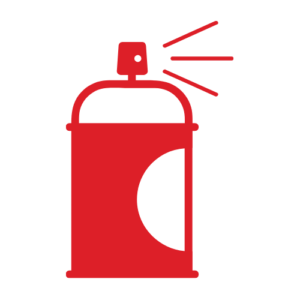
When you are stuck at home, part of the shelter in place definition includes keeping surfaces clean, especially if you are caring for a sick loved one, even if they don’t have the pandemic disease.
Here are the CDC’s recommendations for using disinfectants at home when someone is sick:
You can dilute household bleach to clean counters and doorknobs. Be sure to check the expiration date when you are stocking up to shelter in place.
Follow the manufacturer’s instructions to apply the disinfectant effectively in a well-ventilated area. Do not mix household products to avoid dangerous chemical reactions.
Keeping Well
4. First-aid Kit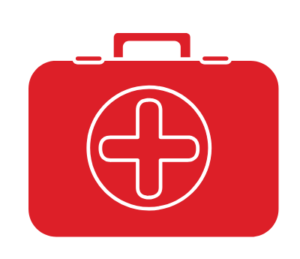
What does shelter in place mean in terms of first-aid supplies? If you want to avoid going to urgent care, make sure you have bandages, antiseptic, gauze, adhesive tape and other items needed to treat minor wounds and injuries.
Make sure you have a thermometer to monitor the temperature of anyone in your home who falls ill.
John Hopkins has published a comprehensive list of first-aid supplies that can help you in an emergency. The list was recently updated to include items specific to COVID-19.
5. Supply of Prescription and OTC Medicines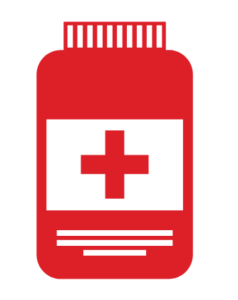
What is shelter in place preparation for prescription and over-the-county medicines? Keep in mind that medicines that you may need to get through the pandemic include ibuprofen and other pain medications. Keep cough drops and medications to alleviate flu symptoms on hand for COVID-19 and other diseases with flu-like symptoms.
If you take prescription medication for a chronic condition, try to get a three-month supply so that you don’t have to go out while the pandemic rages on. This includes insulation, heart and blood pressure medication.
If you rely on over-the-counter medications for pain relief, asthma symptoms or anything else, stock up while stores are still open in your area.
6. Humidifier
What do you need to shelter in place? A humidifier might not be the first thing you think of. However, NPR recommends keeping a humidifier on hand to alleviate the symptoms of the coronavirus. Since there’s no cure, anything that can provide relief is a viable addition to your pandemic survival kit.
If someone in the household falls ill, it’s important to minimize the circulation of infected droplets. The shelter in place definition can be extended to include habits that keep the disease from spreading. This includes hygiene basics such as coughing and sneezing into a tissue or inside your T-shirt in an emergency. (This could be less than ideal for larger sneezes.)
Keep air circulating by opening a window or turning on a fan.
So why a humidifier? Increasing the humidity can keep your nose from drying out. You need to keep the protective membranes moist so that they are more effective in filtering out pathogens Mid-range humidity may make some viruses decay faster.
Staying Alive
7. Non-perishable and Shelf-Stable Goods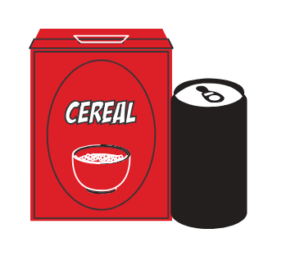
Collecting food and other essentials needed to survive is one of the most important categories in an effective pandemic preparedness safety plan.
Most public health officials urge residents to stock up on canned goods and frozen foods to get you through the lock-down period. However, what you stock is largely up to the tastes of your family. You should try to collect a variety, although you may not be able to find many choices as supply chains slow down due to pandemic safety measures.
Here are a few guidelines:
- Remember to include protein sources such as peanut butter, tuna, beans, and other shelf-safe options.
- Canned soups often have vegetables and meat, but try to opt for low-sodium options.
- Don’t forget canned fruit to maximize your vitamin and mineral intake.
Make a list to ensure you are spending your money wisely and getting all the items you need.
8. Include Items that Can Keep You Sane
What do you need to shelter in place? The answer may well be different for everyone. However, include “luxury” items you need to stay sane while stuck at home with your spouse, kids, roommates and other members of your household.
Consider decaf or half-caf versions of your favorite coffee, tea, and cocoa. Remember that hot liquids can help break up mucous in the airways and may even flush out some pathogens.
9. Pet Food
What is shelter in place like for your animals? That may depend on how good a job you do at stocking up on supplies for them too.
Along with 30 days of dog, cat and bird food, make sure you have enough supplies to keep your pet comfortable for the duration of the lockdown. This includes cat litter and wee-wee pads for dogs. Remember that you could be forced to stay inside most of the day, so opportunities to walk your dog may be limited.
Consider stocking up treats to help break up the long days at home for your furry buddies.
10. Vitamins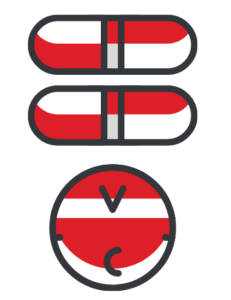
What do you need to shelter in place? Since safeguarding your health is a priority, stock vitamins for the whole family.
If you don’t currently take a multivitamin, a pandemic is a great time to start. Your diet may become less diverse as the pandemic continues. Vitamins help ensure you’re getting the minimum nutrients required for a healthy diet.
What About Water?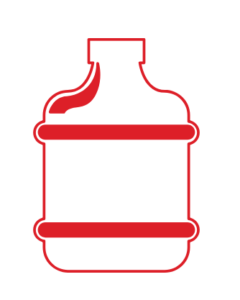
What does shelter in place mean? That’s going to be different depending on the circumstances. For instance, even though many worried shoppers have been compelled to hoard bottled water, that’s not a reasonable plan. Most people won’t have to stock up on water in a pandemic, as they would during a natural disaster that compromised the water supply. Municipal water supplies will not be interrupted. However, if you typically use filtered water, it’s a good idea to buy extra filters.
Related Content: